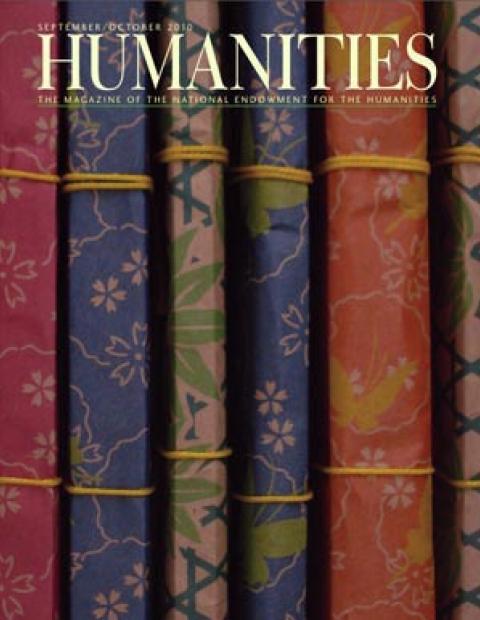The great fear of those in the business of promoting the humanities is that people will realize we have nothing new to say. It’s not actually true that we have nothing new to say, but even if it were, well, that would be a problem only if the only things worth saying were new. And that is not the case.
Many old things bear repeating, just as some new things may not be worth saying in the first place. But, as an editor, what I like most of all is when an important old story takes a new turn.
Take the letter Anna Maria Gillis writes about in this issue: It’s from the famed explorer and humanitarian Dr. David Livingstone to Horace Waller, his friend and later biographer in England, and has just been made legible 139 years after the fact.
Written in the margins and across the text of magazine pages using homemade ink, because Livingstone had run out of both paper and ink, the letter has been subjected to spectral imaging and mathematical analysis to extract the words from these previously muted pages. Next the British-American team of researchers is going to decipher one of Livingstone’s field diaries.
Also new are a number of discoveries made in recent decades concerning the true scope of the transatlantic slave trade. As James Williford explains, historians for a long time could only guess at the number of Africans kidnapped, shipped across the ocean, and sold at auction. Now, in the digital age, the compilation of disparate collections has made it possible to quantify this gross injustice.
No crime weighs more heavily on the American conscience than slavery, so it is a little shocking to learn from NEH research fellow Elise Lemire about the handful of slaves in Concord, Massachusetts, where Paul Revere rode and, later, the transcendentalists lived. That slavery helped underwrite the literary and intellectual pursuits of Concord gentry makes for an apt reminder that our most civilizing accomplishments may have developed with the historical assistance of this brutal institution.
No history of brutality would be complete without a good section on the Roman Empire, about which Edward Champlin writes in his essay on the somewhat forgotten story of Tiberius and his protégé Sejanus: two men of learning, one older and retiring, the other young and ambitious. They seem a great match until the moment of final glory for Sejanus, when he, fortune’s favorite, expecting an equal share of the princeps’ power instead loses everything.
This issue also boasts a sharp-elbowed report from Janet Mansfield Soares on the founding of modern American dance at Bennington College in Vermont. Ilan Stavans explores the fashionable term mestizo, on the occasion of a new documentary about the collision of European and Mesoamerican cultures. And this issue features an essay, by yours truly, about print culture as described in a new reference series on the history of the book in America.

